
Tipos de ópalos: una lista completa de tipos de ópalos, orígenes, colores y más.
 Los ópalos parecen contener galaxias, pero ¿sabías que existe una gran variedad de tipos de ópalos? Conocidos principalmente como la piedra natal de octubre , los ópalos son fascinantes milagros de la naturaleza y se presentan en numerosas variedades.
Los ópalos parecen contener galaxias, pero ¿sabías que existe una gran variedad de tipos de ópalos? Conocidos principalmente como la piedra natal de octubre , los ópalos son fascinantes milagros de la naturaleza y se presentan en numerosas variedades.
Cuando se trata de los tipos y significados de los ópalos, los ópalos generalmente simbolizan la esperanza y la inocencia, pero el significado de un ópalo puede diferir según el tipo de ópalo.
Entonces, ¿qué tipos de ópalos existen?
Hoy cubriremos todos los tipos de ópalos con imágenes separadas por categoría, origen y color. Antes de empezar, veamos cómo clasificarlos.
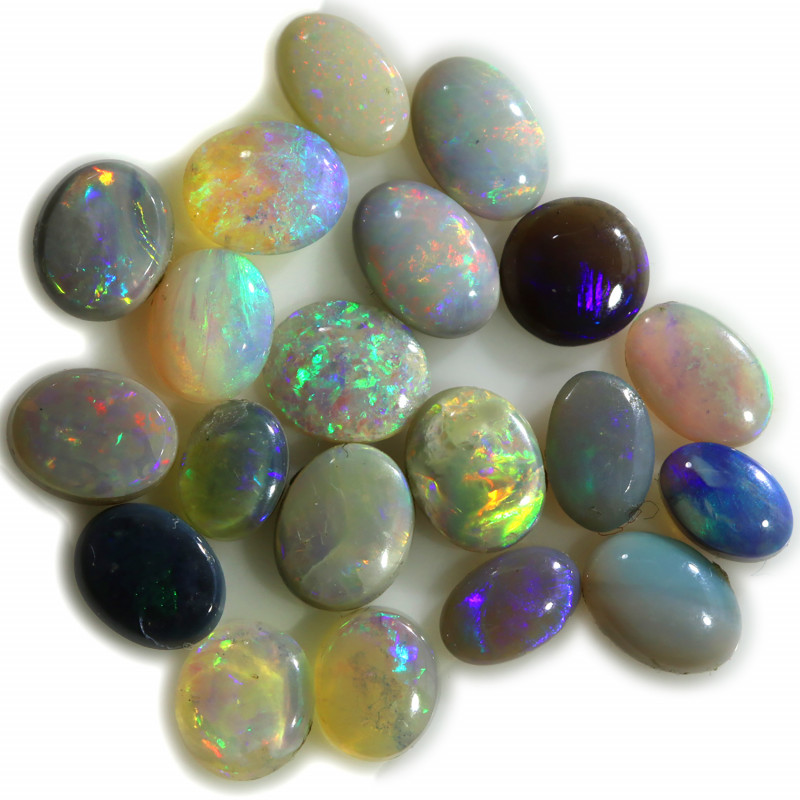
¿Cuáles son los tipos de ópalo?
Existen cientos de tipos de ópalo en todo el mundo, pero la primera distinción que hay que conocer es entre los ópalos comunes y los preciosos . Los ópalos preciosos presentan un juego de colores iridiscente, mientras que los comunes no.
El método principal para clasificar los ópalos es por el color del cuerpo. El término técnico es tono del cuerpo, aunque también se utiliza el término "tono base" o "color de fondo".
En los ópalos preciosos, el tono del cuerpo se refiere a la oscuridad o claridad relativa del fondo de la piedra. En los ópalos comunes, el tono del cuerpo se basa simplemente en el color general de la piedra.
Otras agrupaciones incluyen el origen, las inclusiones y la formación del ópalo. Antes de profundizar en estos temas, ¿cuáles son los tres tipos de ópalos que la mayoría de la gente busca?
Tipos de ópalo más populares
A pesar de la abundancia de diferentes variedades de ópalo, tres tipos de ópalo toman la delantera: ópalo blanco/claro, ópalo gris/oscuro y ópalo negro.

Ópalo blanco/claro
El ópalo claro o blanco se refiere a cualquier ópalo con un tono de cuerpo de N7 a N9 y puede ser común o precioso. Los ópalos claros varían de incoloros a gris claro, mientras que los ópalos blancos tienen un cuerpo de blanco a gris pálido. Estos ópalos pueden ser transparentes o semiopacos, pero la mayoría tienen un tono lechoso.
El blanco es el color de ópalo más común y el tipo de ópalo precioso más abundante. La mina Coober Pedy de Australia se ha ganado el apodo de "capital mundial del ópalo" por su abundancia de ópalos blancos preciosos.

Ópalo gris/oscuro
El ópalo gris u oscuro se encuentra entre el blanco y el negro, con tonos de cuerpo N5-N6. También llamados "ópalos seminegros", estos ópalos comunes o preciosos tienen un tono de cuerpo gris medio, no lo suficientemente oscuro como para ser un ópalo negro. La mayoría del ópalo oscuro proviene de Lightning Ridge o Mintabie, Australia. Este tipo es menos común que el ópalo blanco, pero presenta un juego de colores más brillante.
Hablando de ópalos oscuros, ¿cuál es el tipo de ópalo más raro?
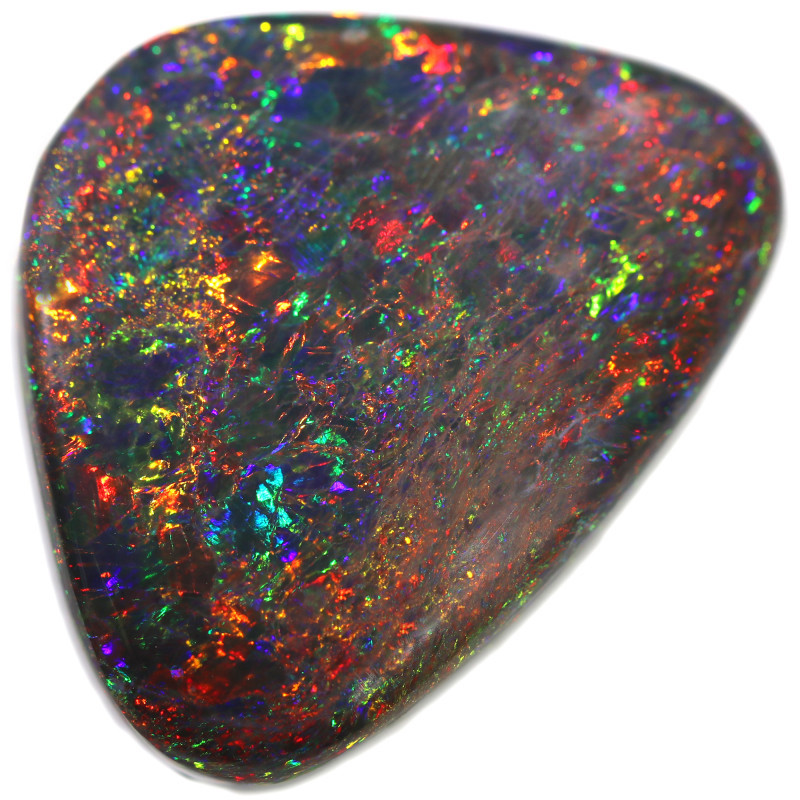
Ópalo negro
El ópalo negro es la variedad más rara, y se caracteriza por un tono gris oscuro a negro de N1 a N4. Estos ópalos pueden ser transparentes (cristales negros) u opacos, aunque existen tanto ópalos negros comunes como preciosos.
Aunque son raros, la mayoría de los ópalos negros de calidad gema provienen de Lightning Ridge, Australia. El precioso ópalo negro tiene el juego de colores más brillante de todos los ópalos. ¿En qué otros colores existen los ópalos?
Ópalos por color corporal
Además del blanco, gris y negro, también se pueden encontrar ópalos en tonos rosa, morado, azul, verde, incoloros y fuego. ¡Exploremos cada uno!

Ópalo rosa
El ópalo rosa es un ópalo común en tonos rosa pálido o chicle, aunque también pueden aparecer otros colores como el blanco, el amarillo, el melocotón, el lavanda y el negro. Este tipo de ópalo suele presentar inclusiones que crean vetas o zonas de color oscuras.
Los ópalos rosados provienen de Australia, México y Estados Unidos, pero Perú es la fuente más abundante. Los ópalos rosados peruanos tienen un tono lechoso y un color vivo y uniforme, especialmente el ópalo andino rosado.
Los ópalos rosados de Australia Occidental son en realidad radiolarita opalizada y a menudo tienen abundantes inclusiones (lo que significa que tienen trazas de otros minerales o desechos), lo que crea patrones blancos, marrones o negros.
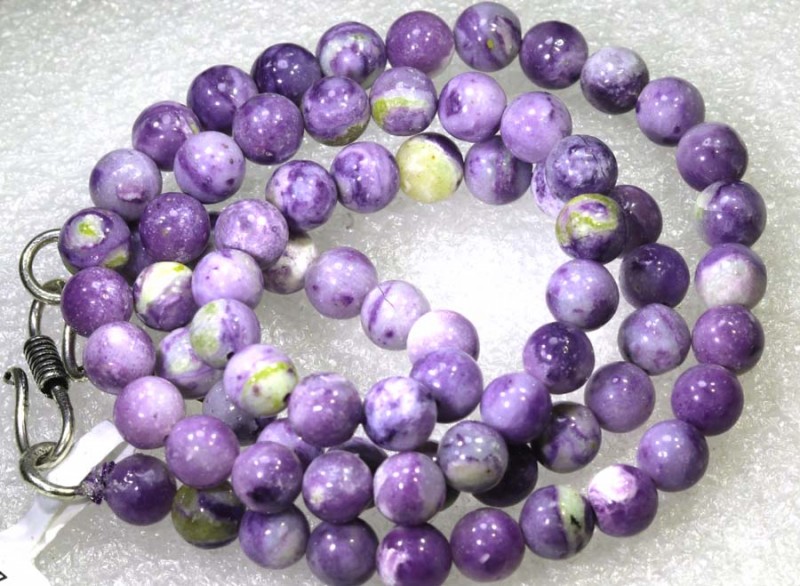
Ópalo morado
El ópalo morado, también llamado "ópalo púrpura" u "ópalo real", es una variedad común de ópalo púrpura originaria de México. Sus colores van del lavanda al violeta, y suelen ser lechosos y opacos. También se observan matices púrpuras en el ópalo Tiffany , un conglomerado de fluorita de ópalo procedente de Utah, EE. UU., coloreado de púrpura por los gases de flúor.

Ópalos azules
Los ópalos azules pueden ser comunes o preciosos, desde un verde azulado intenso hasta un azul cielo pálido. Perú está estrechamente vinculado a esta variedad, y el término "ópalo azul" suele referirse al ópalo azul común peruano. Perú también produce ópalo azul precioso, y algunas piedras presentan juegos de color en pequeñas zonas.
Brasil se une a Perú en la producción de un raro ópalo azul verdoso llamado ópalo de Paraíba. Otras minas de ópalo azul se encuentran en Eslovaquia, Indonesia y EE. UU., incluyendo los ópalos Owyhee de color azul pastel de Oregón.
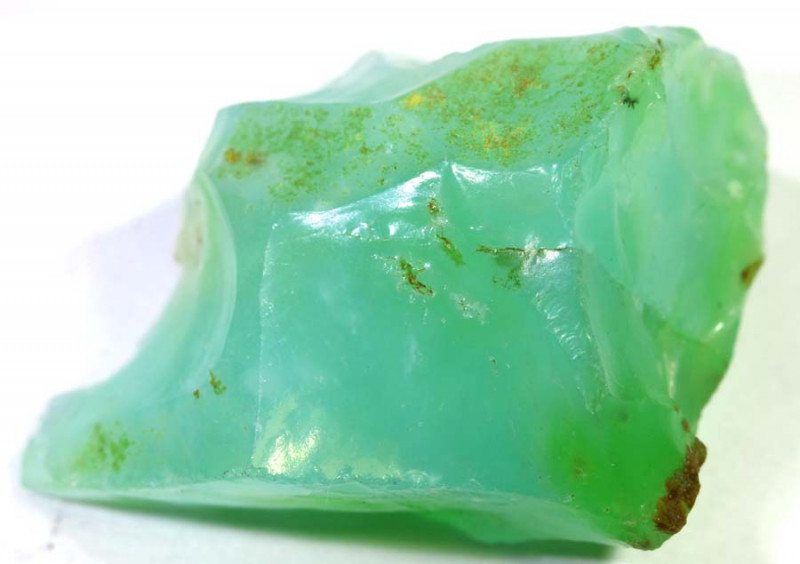
Ópalos verdes
Un ópalo común en todo el mundo es el ópalo verde , que se presenta en llamativos tonos esmeralda, verde amarillento o jade apagado. Presente en seis continentes, las minas más importantes se encuentran en Australia, Brasil, Perú, México y Estados Unidos.
La opalita natural es otra variedad común de ópalo verde, aunque también presenta matices morados. La opalita suele ser de color verde musgo con inclusiones dendríticas oscuras y puede presentar chatoyancia (efecto ojo de gato). La mayoría de los especímenes provienen de África, pero la opalita ojo de gato de Etiopía suele ser de color miel o amarillo.
Otro tipo de ópalo verde es el ópalo prasé de Tanzania . Esta variedad contiene níquel, lo que le da a la piedra un brillante color verde azulado neón. Los ópalos prasé son translúcidos o transparentes, y algunos los llaman "jade africano".
A continuación, ¿qué color de ópalo es el más valioso? El ópalo rojo, que también es el color más valioso del ópalo de fuego.
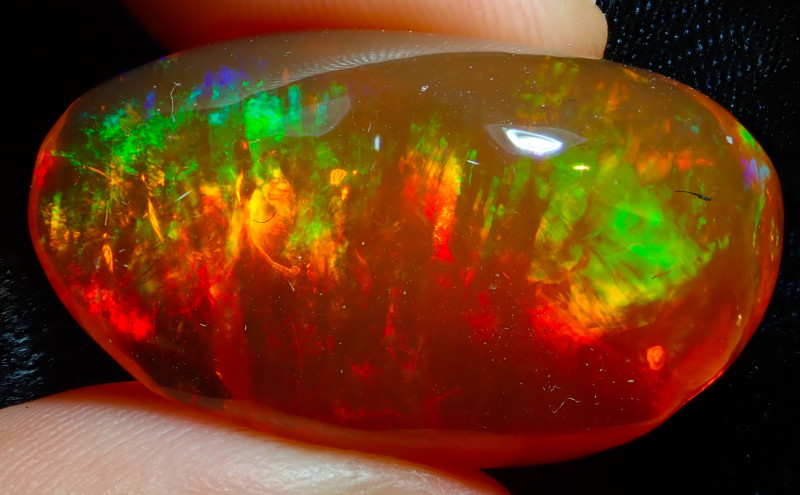
Ópalo de fuego
¿Te encanta el espectáculo ardiente? Encontrarás precisamente eso en los ópalos de fuego. Los ópalos de fuego vienen en colores rojo, naranja, amarillo y marrón, y pueden ser comunes o preciosos. Originarios de México, estas piedras a menudo se llaman ópalos de fuego mexicanos, aunque también provienen de Australia y Etiopía.
Los ópalos de fuego se diferencian de la mayoría de los ópalos en que son translúcidos o transparentes (no opacos) y se forman dentro de volcanes. La mayoría de los ópalos de fuego mexicanos son comunes, pero Etiopía produce preciosos ópalos de fuego con destellos de color violeta neón y verde.

Ópalo incoloro
Además del arcoíris, existen tipos de ópalo incoloros. Si bien carecen del color de los ópalos mencionados, cada uno ofrece propiedades únicas.
Ópalo cristal : Cualquier ópalo precioso que sea incoloro y transparente, sin lechosidad y N7-N8 en la escala de tonos del cuerpo.
Ópalo gelatinoso /Ópalo de agua : Ópalos preciosos transparentes e incoloros que son ligeramente más oscuros que los ópalos de cristal y tienen una apariencia gelatinosa, a veces con un juego de color interno y un brillo azul o dorado.
Ópalo Contraluz : Traducido del español como “contra la luz”, los ópalos preciosos incoloros muestran un juego de colores flotando dentro del ópalo cuando iluminas la piedra desde atrás.
Pasando a la siguiente categoría, tenemos los tipos de ópalo definidos por formarse con otros materiales.
Inclusiones y variedades de ópalo
La mayoría de los ópalos se forman mediante procesos similares, pero cuando un ópalo interactúa con minerales y partículas cercanas durante su formación, puede crear un tipo de ópalo completamente nuevo. El ópalo y otros materiales pueden fusionarse externamente, con el ópalo creciendo alrededor de otro mineral, o internamente, con inclusiones atrapadas en su interior.
Las inclusiones abarcan cualquier material atrapado en una piedra preciosa durante su formación. Si bien la mayoría de los materiales superficiales de una piedra se denominan "imperfecciones", las inclusiones internas a veces pueden alcanzar la superficie.
Si te preguntas qué tipo de ópalo es mejor, muchos dirían que la primera variedad de ópalo con combinación de minerales de nuestra lista: ¡ópalo de roca!

Ópalo de Boulder
El ópalo de roca es una combinación de ópalo precioso y roca huésped, generalmente piedra de hierro o arenisca, aunque algunos contienen vegetación o madera fosilizada en lugar de roca.
El preciado ópalo se presenta en parches o vetas delgadas adheridas o rodeadas por la roca madre. Esto ocurre cuando el agua de sílice del ópalo preformado se filtra en las grietas de la roca antes de que el ópalo se endurezca.
La primera fuente de ópalo boulder fue Queensland, Australia, y esta región sigue siendo una fuente abundante. Otras ubicaciones de ópalo boulder incluyen Brasil y Canadá.
Los ópalos de Boulder tienen algunos subtipos:
Fósil de madera de ópalo de Boulder : también llamado ópalo de reemplazo de madera fósil, esta variedad contiene madera opalizada adherida a la roca huésped.
Ópalo Boulder de Andamooka : extraídos en Andamooka, Australia, estos ópalos raros tienen rocas anfitrionas de cuarcita y a veces se los llama "damas pintadas".
Nuez de Ópalo : Se encuentran en los yacimientos australianos de Yowah o Koroit. Son ópalos redondos de roca, similares a las nueces de árbol, con bandas distintivas. Los ópalos de roca de estos yacimientos suelen tener un reverso de mineral de hierro de color marrón chocolate, mientras que otras minas producen piedras con reverso marrón claro.
Ópalo cristalino tipo pipa de roca : esta variedad contiene ópalo cristalino formado dentro de cilindros huecos o tubulares dentro de la roca huésped.
Ópalo Cantera : Este tipo está compuesto de ópalo de fuego u ópalo precioso en riolita rosa.
Los ópalos de roca también pueden presentarse como ópalos de matriz de roca, un subtipo que se mezcla con nuestra siguiente variedad: ¡ópalo de matriz!
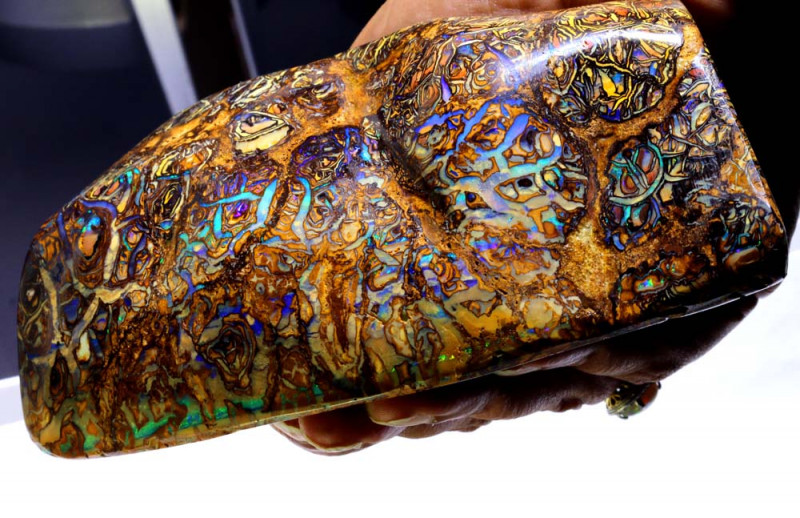
Ópalo matriz
Al igual que el ópalo boulder, el ópalo matriz contiene ópalo precioso combinado con su roca madre. Sin embargo, en el ópalo matriz, el ópalo precioso rellena los huecos o poros entre los granos de la roca madre, creando un juego de colores más uniforme en toda la piedra, en lugar de en secciones diferenciadas.
El ópalo matriz proviene de México, Honduras y Australia. En Australia, el ópalo matriz de Andamooka es poroso, por lo que se trata químicamente con facilidad (y a menudo) para mejorar su color. Honduras produce principalmente ópalo matriz, y su variedad opaca suele tener una roca huésped oscura salpicada de ópalo vibrante.
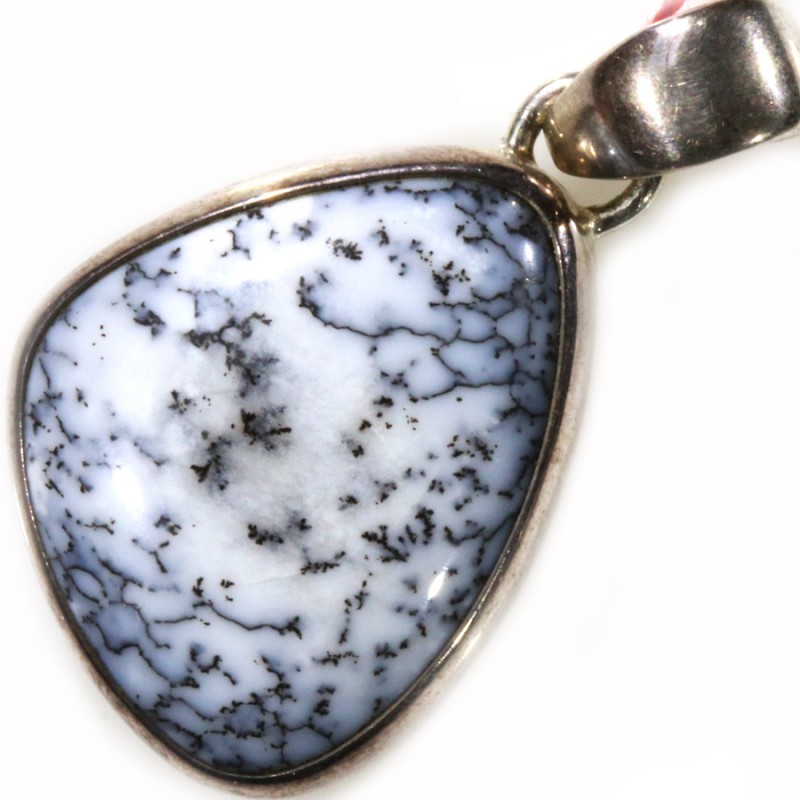
Ópalo dendrítico
También llamado "ópalo musgoso", el ópalo dendrítico es un tipo de ópalo común de color blanco o marrón amarillento que se caracteriza por inclusiones dendríticas (similares al musgo) de color verde o marrón. Estas inclusiones, a menudo de manganeso o hierro, forman patrones únicos, incluyendo los que evocan un paisaje forestal, como los que se ven en los "ópalos de paisaje".
Los ópalos dendríticos pueden contener casi un 30 % de agua, lo que los clasifica como "gemas blandas". La mayoría de estos ópalos provienen de Australia, México o EE. UU ., pero también se pueden encontrar en Centroamérica, Asia y Rusia.
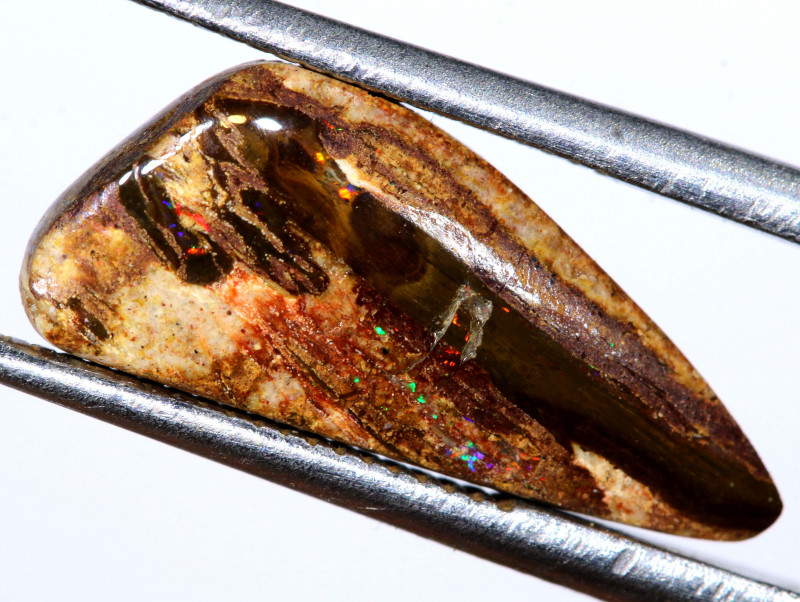
Madera opalizada
La madera opalizada es un tipo de madera petrificada que contiene ópalo. La madera petrificada es madera o vegetación fosilizada donde parte de la planta ha sido reemplazada por piedra, en este caso, ópalo.
Estas bellezas terrenales se forman cuando el agua de sílice preserva los tejidos de la madera enterrados. ¿Dónde ocurre este fenómeno natural? La madera opalizada se forma comúnmente en bosques cubiertos de cenizas. Yacimientos prominentes se encuentran en EE. UU., Indonesia, Rusia, México y Brasil.
Pasando de las combinaciones formadas naturalmente, veamos ahora cómo los humanos combinan los ópalos con otros materiales.
Ópalos compuestos
La mayoría de los ópalos son sólidos, compuestos 100 % de ópalo. Los ópalos naturales mezclados con materiales no ópalos, por ejemplo, no son sólidos. Sin embargo, la distinción más evidente radica en los ópalos sólidos y los ópalos compuestos . Los ópalos compuestos o "ensamblados" han sido modificados por joyeros e incluyen ópalos dobletes, tripletes y mosaicos/chips. ¿Por qué modificar un ejemplar tan naturalmente impecable? Los ópalos compuestos ofrecen precios asequibles, lo que los convierte en una excelente alternativa a los ópalos genuinos.
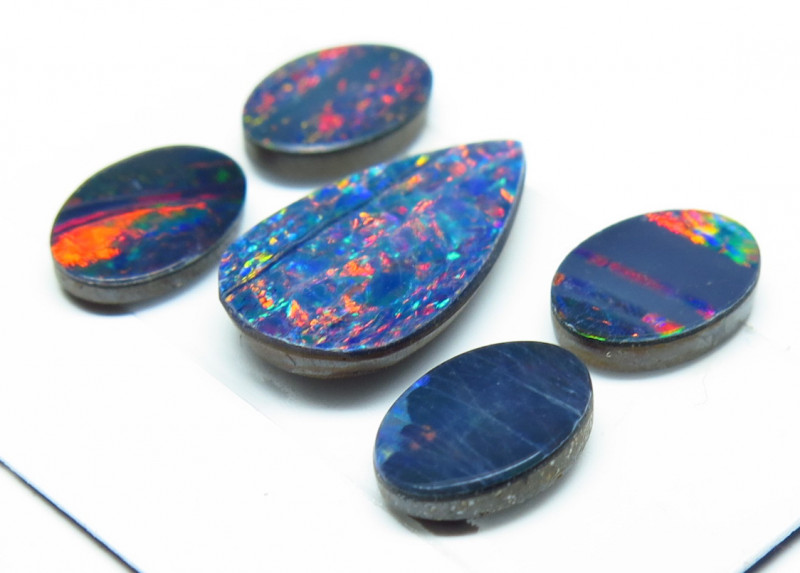
Ópalos dobletes
Los ópalos dobletes son ópalos compuestos con una fina lámina de ópalo precioso adherida a una capa base. Esta base puede ser de mineral de hierro para imitar el ópalo boulder, otro mineral o plástico. A menudo, el ópalo precioso claro se adhiere a una base negra para imitar el ópalo negro precioso.
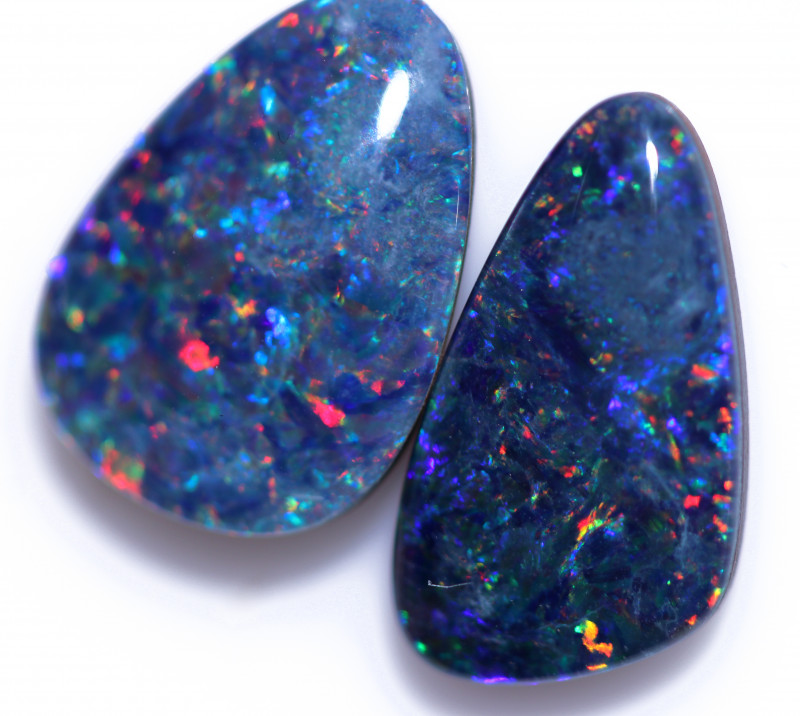
Ópalos tripletes
Los tripletes de ópalo son básicamente dobletes con una cúpula protectora de cristal adherida en la parte superior. La cúpula puede ser de vidrio, cuarzo o plástico y, además, realza el juego de colores de la piedra. Los tripletes suelen ser más económicos que los dobletes porque se utiliza menos ópalo.

Ópalos de mosaico y chips
Los ópalos mosaico y chip son dos ópalos compuestos en los que las piezas de ópalo se recomponen para formar una nueva forma. En el caso de los ópalos mosaico , pequeñas piezas planas o con formas irregulares se pegan como vitrales sobre una base oscura. En el caso de los ópalos chip, las piezas de ópalo se mezclan con resina y se endurecen hasta alcanzar la forma deseada.
Antes de que los joyeros puedan ensamblar ópalos compuestos, los mineros deben encontrar las piedras. Dado que existen tantos tipos de ópalo, ¿dónde se encuentran en el mundo?
Los factores geológicos y el terreno, que varían enormemente de una región a otra, son las influencias más significativas en el tipo de ópalo. El suelo, la atmósfera y los minerales que dan forma a un ópalo varían en todo el mundo, ¡así que vamos a dar un paseo por el mundo!
Ópalos por origen
Cada mina de ópalo del mundo suele especializarse en un tipo específico. ¡Acompáñenos a recorrer las minas de ópalo del mundo para descubrir sus especialidades!
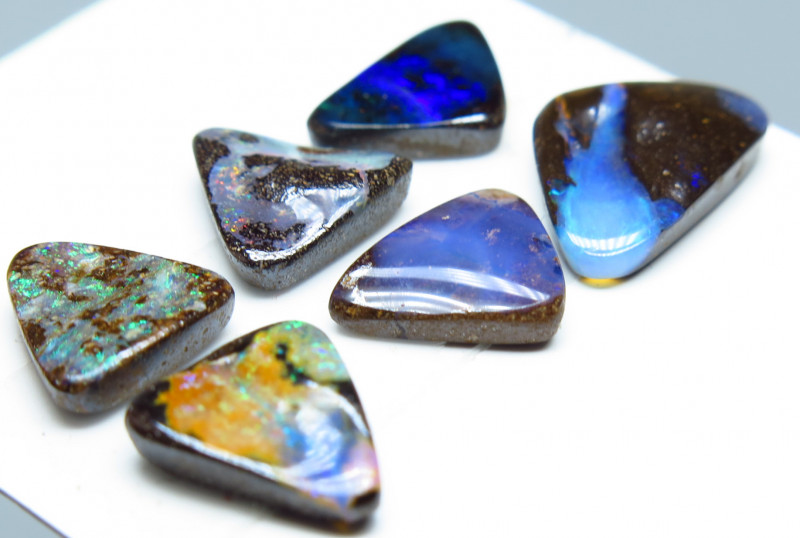
Ópalos australianos
No es ningún secreto que Australia es el mayor proveedor mundial de ópalos. Esto se debe a que Australia cuenta con importantes yacimientos mineros , cada uno conocido por sus diferentes tipos de ópalo australiano :
Andamooka : Conocido por su ópalo con vetas de cristal brillante.
Coober Pedy : Principal productor de ópalo blanco.
Lightning Ridge : el mayor productor de ópalo en términos de valor y conocido por sus ópalos negros de alta calidad.
Queensland: contiene los campos y minas de ópalo de Koroit y Yowah que suministran casi todos los ópalos en forma de roca del mundo.
Tintenbar : Produce ópalo volcánico gelatinoso oscuro.
Ópalo de acantilados blancos : conocido por su ópalo de veta blanca y preciosa, junto con fósiles de piña opalizados.
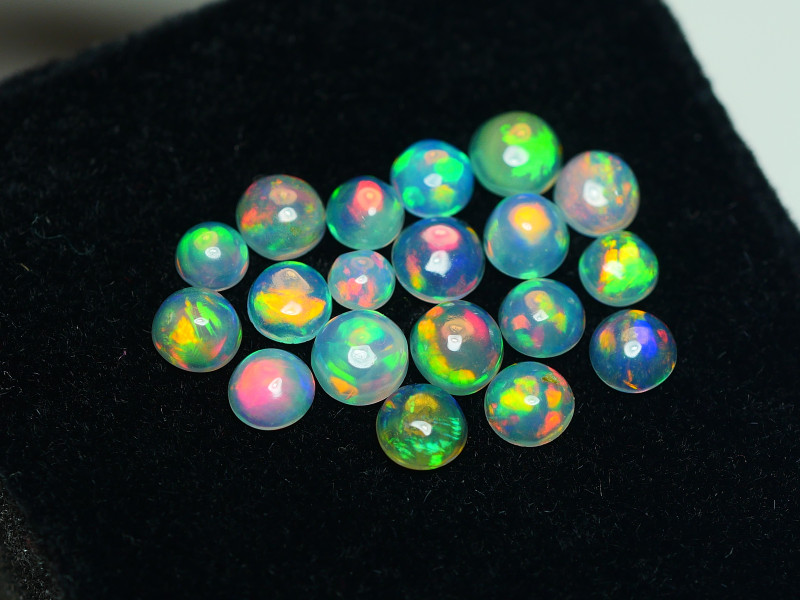
Ópalos africanos
En las últimas décadas, el descubrimiento de varios yacimientos de ópalo en Etiopía ha situado a África como una fuente importante en el mapa del ópalo.
Ópalo etíope : conocido por sus ópalos hidrófanos con un vívido juego de colores y sus preciosos ópalos negros o blancos.
Ópalo de Tanzania : produce la mayor cantidad de ópalo prase.
Ópalo de Madagascar : ópalos pirofánicos y ópalos de fuego Girasol descubiertos recientemente.
Ópalo de Kenia : conocido por los restos de ópalo más antiguos y los ópalos comunes de color verde oliva.
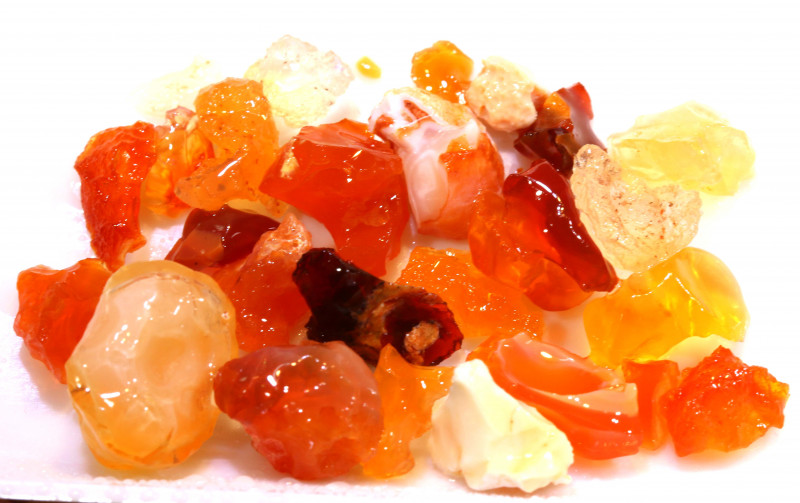
Ópalo de América Central y del Sur
Ópalo mexicano : conocido principalmente por los ópalos de fuego, pero México también produce ópalos de madera, ópalos de contra luz, ópalos de cantera y algunos de los mejores ópalos de agua del mundo.
Ópalo brasileño : conocido por su ópalo cristalino con destellos de color pastel y bajo contenido de humedad.
Ópalo peruano : conocido como ópalo peruano azul o rosa, que también es la piedra nacional del país.
Ópalo hondureño : reconocido por albergar las minas de ópalo más antiguas del mundo y producir ópalos de matriz y roca únicos.
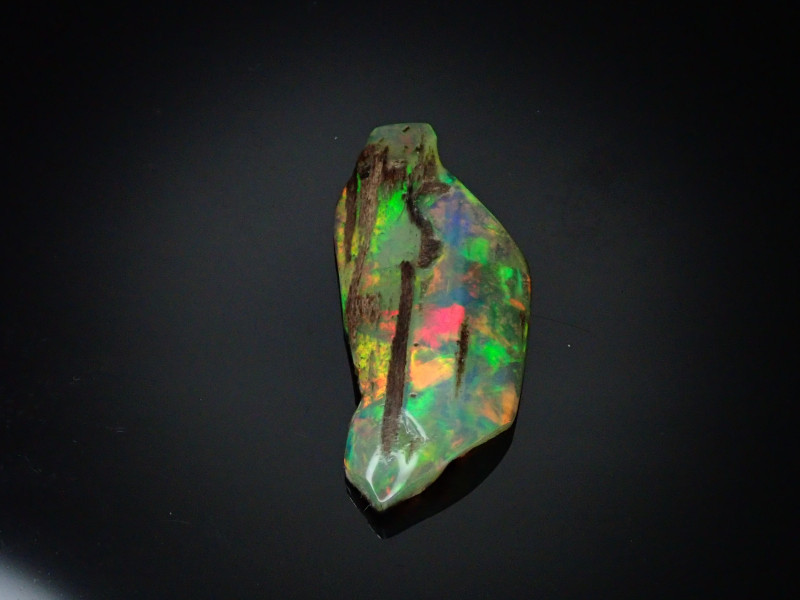
Otras ubicaciones
Ópalos de Indonesia : conocidos por la opalita natural y la madera opalizada.
Ópalos americanos : principalmente de Idaho , Utah y Virgin Valley , las variedades americanas notables incluyen ópalos Owyhee, ópalos “Thunderegg”, ópalos arco iris, ópalos dendríticos, madera opalizada, hialita, ópalos bandeados, ópalos de arena de Luisiana y ópalos de tocino de Utah.
Ópalos eslovacos (o húngaros) : ópalos preciosos de color blanco distintivo con destellos internos de color azul y naranja.
Otros tipos de ópalo
Algunos ópalos no encajan perfectamente en una categoría, ¡pero no deben pasarse por alto!
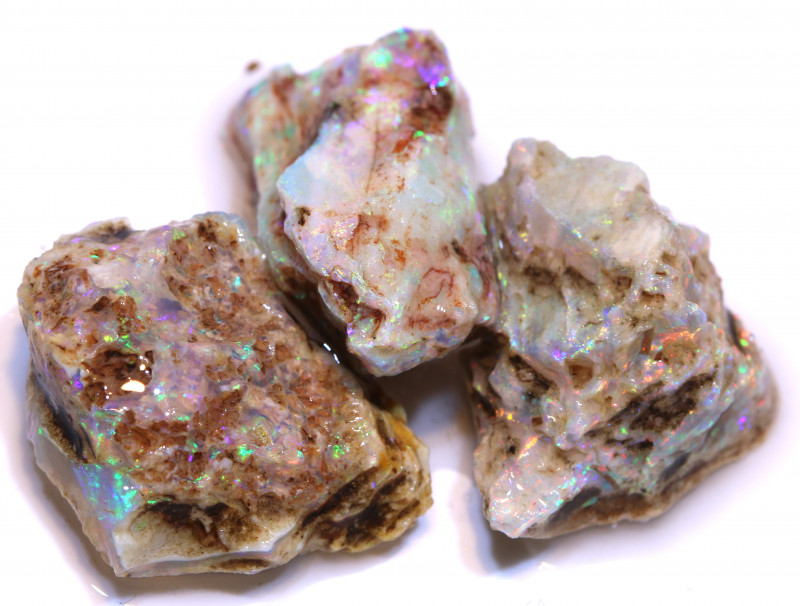
Fósiles opalizados
Al igual que los moldes de gelatina, la solución de sílice rellena las huellas fósiles dejadas en las rocas y se endurece formando un fósil opalizado . Estos ópalos pueden formarse en fósiles de cráneos de animales, conchas , piñas e incluso en un calamar de 100 millones de años llamado belemnita opalizada . Aunque se encuentra principalmente en Australia, se han encontrado fósiles opalizados en EE. UU., Hungría e Indonesia.
¿Cuál es el ópalo más caro? ¡Créalo o no, un fósil opalizado! El Virgin Rainbow es conocido como uno de los ópalos más caros del mundo, si no el más caro, con un valor de más de un millón de dólares. En realidad, es un fósil opalizado de un cefalópodo extinto llamado belemnitida.

Hialita
La hialita es un tipo único de ópalo llamado ópalo-AN, un ópalo amorfo con una estructura reticular similar al vidrio. Esta variedad de ópalo común, incolora, de color amarillo pálido o verde, no presenta esferas de sílice y no presenta juego de colores a menos que presente inclusiones.
La característica más distintiva de la hialita es su fluorescencia verde, causada por su contenido de uranio. Este intenso brillo se manifiesta con luz ultravioleta o luz solar directa.
Ópalos sintéticos
Los términos «sintético», «simulante» e «imitación» pueden confundir a los compradores. Todos se refieren a ópalos sintéticos, pero los ópalos simulados tienen la misma composición química que los ópalos naturales, mientras que los ópalos de imitación solo comparten una apariencia similar.
En términos gemológicos, el término «sintético» se refiere estrictamente a los ópalos simulados. Una excepción es la opalita sintética, una resina de vidrio opalescente sintética.
Los ópalos sintéticos más comunes que se fabrican son los ópalos negros o blancos, pero han surgido diversas variedades simuladas e imitaciones:
Ópalo esterlina (ópalo monarca) : ópalo sintético introducido en 2016 con varios colores y patrones lineales negros que se asemejan a inclusiones de potch.
Ópalo Aurora : Ópalo parcialmente sintético compuesto de sílice y resina, disponible en siete colores de cuerpo y que muestra patrones de remolinos únicos.
Ópalo aliento de dragón : ópalo de imitación con opalescencia pero sin juego de colores, compuesto de vidrio checoslovaco y de aspecto rojo rubí, pero que vira a tonos azules y púrpuras cuando se gira.

¿Qué tipo de ópalo es tu?
¡Y eso cubre todos los elementos de esta lista completa de tipos de ópalo! Ahora que conoces todos los tipos y significados del ópalo, ¿cuál es tu favorito? Si no te decides, explora los cientos de variedades de ópalo disponibles y encuentra el ideal para ti.
¡Descubre tu tipo de ópalo favorito hoy!
Buscar en el Opal Encyclopedia
Subastas relacionadas
Artículos relacionados
El ópalo de roca es uno de los ópalos más valiosos y subestimados del mercado. Descubra más sobre este ópalo único y explore las hermosas piedras que tenemos a la venta.
29th May 2019
Todos los poemas de esta página pertenecen a sus respectivos autores. Se prohíbe su reproducción no autorizada.
9th May 2018
últimos artículos
Los ópalos negros son la variedad más codiciada, con bases profundas que crean un arcoíris de reflejos en la parte superior. ¡Descubre los usos, las propiedades, la historia y el valor de los ópalos negros!
7th Dec 2025
Descubra cómo se clasifican los ópalos y qué factores influyen en su precio. Desde el color y el brillo hasta la talla y el origen, aprenda cómo se valora cada tipo de ópalo, con ejemplos de rangos de precios.
19th Jul 2023
¡Acompáñanos en un viaje y descubre el poder curativo de los ópalos de la mano de nuestra escritora invitada Vivien Schapera, de Crystal Healing Techniques!
20th May 2023
Categorías de artículos
All there is to know about Opals including Black Opals, Ethiopian Opals & Boulder Opal
14 Artículos
Check out our fascinating information and articles on all things amazing in the Opal world
41 Artículos
Opal Auctions sellers who are approved as opal Verified Sellers
4 Artículos





![MASSIVE RAINBOW OPAL MATRIX FROM SEDA OPALS [M5] 585.00 CTS](https://liveplatforms-production.b-cdn.net/tenants/oa/uploads/images/10000-14999/13758/13757.jpg?width=480&aspect_ratio=1001%3A1000)
![MASSIVE 560 CTS OPAL RAINBOW MATRIX [M4]](https://liveplatforms-production.b-cdn.net/tenants/oa/uploads/images/10000-14999/13756/13755.jpg?width=480&aspect_ratio=1001%3A1000)

